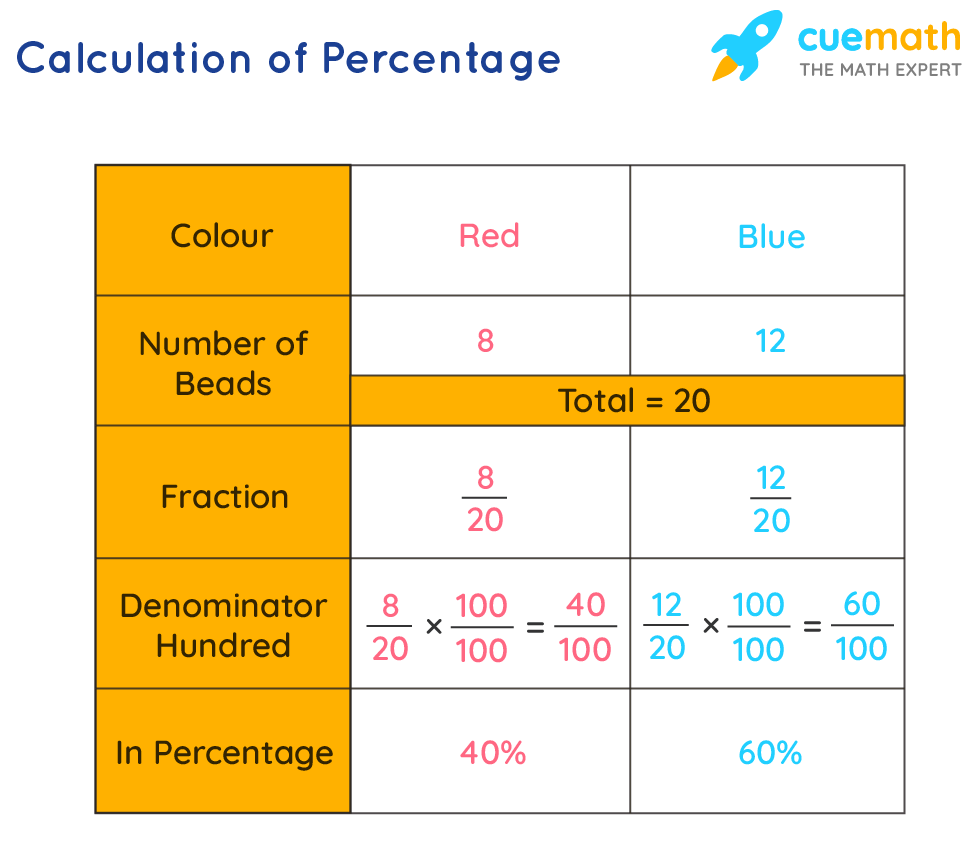
This can help you determine whether your child's weight falls into an acceptable range for its age, or if you need to take steps to help them gain or lose weight to get closer to an average weight. Calculating where your score lies in the data set (your score and the scores of the other test-takers), can help you figure out how your score compares to the rest of the scores.Īnother example is tracking the weight of children compared to other children of the same age. One of the most common examples to express this is by looking at test scores. Typically, if value n is at the kth percentile, then n is greater than k% of the values in the set. Percentiles are useful as they can tell you how one value compares to other values in the data set.
#CALCULATE PERCENTAGES HOW TO#
Related: What Are Excel Quartiles? (And How To Find Them) How is percentile helpful? The kth percentile is then calculated by taking the average of the index value in your data set and the next ranked value. Similarly, when using the "greater than or equal to" method, steps 1-3 remain the same, but this time we would include the index value. Since the value for the kth percentile must be greater than the values that precede the index, the next ranked value would be the kth percentile. Refer to the value that correlates with the index number, as determined in step 3. Use your ranked data set to find your percentile If the index is not a round number, round it up (or down, if it's closer to the lower number) to the nearest whole number. You'll refer to this in the next steps as the position of a value in your data set (first, second, third.). Multiply k (percent) by n (total number of values in the data set). Rank the values in the data set in order from smallest to largest. Related: 11 Essential Data Science Statistics Concepts How to calculate percentileįollow these steps to calculate the kth percentile: 1. This method allows for numbers to be more neatly rounded and defines the median of the set as the 50th percentile. In this method, the kth percentile is the weighted average of the percentiles calculated in the two definitions above. 25, you'd be looking for a value that is greater or equal to 25% of the scores. The kth percentile is the lowest score in the data set that is greater than or equal to a percentage ( k) of the scores. 25, you'd be trying to identify the lowest score that is greater than 25% of scores in the data set. The kth percentile is the lowest score in a data set that is greater than a percentage ( k) of the scores. In statistical terms, there are three separate definitions of percentile. Inferential Statistics: Differences and Ways to Measure Percentile definitions Percentiles are commonly used to report values from norm-referenced tests (in which the average is determined by comparing a set of results in the same group) as the percentages of scores that fall below those of the average of the set.Įxample: A male child age 12 with a weight of 130 pounds is at the 90th percentile of weight for males of that age, which indicates that he weighs more than 90 percent of other 12-year-old boys. While there is technically no standard definition of percentile, it's typically communicated as the percentage of values that fall below a particular value in a set of data scores. What is a percentile?Ī percentile is a term used in statistics to express how a score compares to other scores in the same set.
#CALCULATE PERCENTAGES PLUS#
In this article, we'll discuss the percentile metric, how it is used and why it's important, plus we explain how to calculate the percentile of a data set. This is when percentiles prove useful, as they provide you with context to better understand individual values and values as a whole. You might score a 75 on a college exam, for example, but that only tells you your score and not how it compares to the scores of your classmates.


When scoring tests or other sets of important values, the raw number is not necessarily enough to relate the values to one another.


 0 kommentar(er)
0 kommentar(er)
